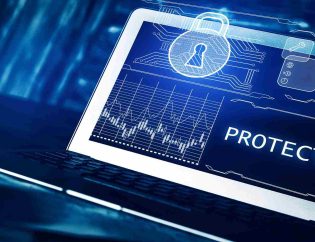
Table of Contents
Introduction
Understanding EDR and XDR: A Comparative Analysis
Key Differences Between XDR and EDR
Why XDR is a Stronger Security Solution
Choosing the Right Security Solution for Your Business
New Trends in Cybersecurity Threat Detection
Industry Insights and Expert Opinions
Customer Testimonial
FAQs
Conclusion
Introduction
Cyber threats are growing and businesses need strong security. EDR protects devices like computers, while XDR covers networks, cloud systems and more. Understanding their differences helps companies choose the right solution. As attacks become more advanced, having the best security is crucial to keep data safe.
Understanding EDR and XDR: A Comparative Analysis
What is EDR (Endpoint Detection and Response)?
EDR is a security system that protects computers, laptops and other devices from cyber threats. It constantly monitors for suspicious activity, detects threats and responds quickly to stop attacks.
Key Features of EDR:
- Continuous monitoring to spot unusual behavior on devices.
- Threat detection to stop attacks before they cause damage.
- Investigation tools to analyze past incidents and prevent future ones.
- Automated response to quickly contain threats.
- Integration with other security tools for better protection.
EDR is important for businesses using multiple devices, helping detect threats early and prevent data breaches.
What is XDR (Extended Detection and Response)?
XDR is a more advanced security system that protects not just devices but also networks, emails and cloud systems. It offers a wider view of threats and improves response times.
Key Features of XDR:
- Covers multiple areas like endpoints, networks and emails.
- Collects and analyzes data from different sources for better threat detection.
- Automated responses to stop attacks quickly.
- Better security visibility to find hidden threats.
- Uses AI and advanced analytics to improve cybersecurity.
XDR helps businesses strengthen their security, detect threats faster and reduce the time needed to stop cyberattacks.
Key Differences Between XDR and EDR
| Feature | EDR | XDR |
| Scope | Endpoints only | Multiple security layers |
| Data Sources | Limited to endpoint logs | Network, cloud, email and more |
| Detection Accuracy | Endpoint-based | Holistic view across all sources |
| Automation | Limited | Highly automated and integrated |
| Threat Intelligence | Basic | Advanced AI-driven threat intelligence |
| Security Visibility | Limited to endpoints | End-to-end security coverage |
Why XDR is a Stronger Security Solution
- Wider Protection
It secures not just devices but also networks, emails and cloud systems, offering complete coverage.
- Smarter Threat Detection
By analyzing data from multiple sources, it detects threats more accurately and reduces false alarms.
- Automated Response
AI-driven automation stops attacks quickly without manual intervention, reducing workload for security teams.
- Seamless Integration
Works smoothly with different security tools, improving overall cybersecurity efficiency.
- Faster Incident Handling
Detects and responds to threats instantly across different areas, minimizing damage and downtime.
Choosing the Right Security Solution for Your Business
Selecting the right cybersecurity solution depends on your organization’s specific needs, resources and risk level. Here’s how to decide:
- Need Strong Endpoint Protection? If your main concern is protecting workstations, servers and mobile devices, EDR is a reliable choice. It focuses on identifying and stopping threats that target endpoint devices.
- Require Complete Security Visibility? If you need to monitor and secure multiple areas, such as networks, emails and cloud environments, a broader solution is necessary. XDR offers extended protection by detecting threats across different attack surfaces.
- Handling Advanced Threats? For businesses facing sophisticated cyberattacks, automation and AI-driven threat detection are essential. XDR provides automated response and deep data analysis, reducing the need for manual security monitoring.
- Looking for a Budget-Friendly Option? If cost is a primary concern, EDR is generally more affordable. However, XDR delivers greater long-term value by enhancing security across all entry points, minimizing the risk of major cyber incidents.
Choosing between these solutions depends on your security goals. If you need basic protection, EDR is sufficient, but for advanced and comprehensive security, XDR is the better investment.
New Trends in Cybersecurity Threat Detection
As cyber threats keep changing, new ways to detect and stop them are being developed. Here are some important trends:
- AI-Powered Threat Detection: Artificial intelligence (AI) helps security systems find and stop threats faster. It learns from past attacks to predict and prevent new ones, reducing false alerts.
- Zero Trust Security: This approach means no one is trusted automatically. Every user and device must prove they are safe before getting access, reducing the risk of hacking or data leaks.
- Cloud Security: More businesses are using cloud services, so security is shifting to protect data stored online. Cloud-based security ensures safe access from anywhere.
- Automation & Faster Response: Security tools can now work together automatically, stopping threats in real time without waiting for human action. This helps organizations react quickly and stay safe.
Industry Insights and Expert Opinions
“The best way to predict the future is to create it.” – Peter Drucker.
This applies to cybersecurity, where adopting proactive defense mechanisms like XDR can safeguard organizations against evolving threats. As cyberattacks grow in complexity, businesses must shift from reactive security measures to proactive and integrated security solutions.
XDR vs EDR: 🛡️ EDR focuses on endpoint threats, while XDR extends detection across emails 📧, networks 🌐 & cloud ☁️. XDR = broader, proactive security. Which one fits your needs? 🤔 #CyberSecurity #XDR #EDR
— Hyper Secure (@HyperSecure) February 20, 2025
Customer Testimonial
“Since implementing XDR, our threat detection and response capabilities have improved significantly. We now have a holistic security approach that covers endpoints, networks and emails seamlessly. This has reduced our incident response time and minimized the impact of security breaches.” – IT Security Manager, Financial Sector
Conclusion
Understanding the difference between XDR and EDR is important for choosing the right cybersecurity solution. EDR protects individual devices like computers and laptops, while XDR provides security across multiple areas, including networks and emails. If a business wants a stronger and more automated security system, XDR is the better choice because it detects threats faster and responds automatically.
How Hyper Secure Can Help
At Hyper Secure, a leading Endpoint Security Company, we specialize in advanced cybersecurity solutions, including XDR and EDR integration. We help businesses defend against modern cyber threats with proactive protection, seamless integration and automated threat mitigation. Secure your organization today with Hyper Secure’s cutting-edge defense technologies.
FAQs
What is the primary difference between XDR and EDR?
EDR focuses solely on endpoints, while XDR extends detection across multiple security layers, including networks and cloud environments.
Can XDR replace EDR?
Yes, XDR includes EDR functionalities and enhances them with broader visibility and automation.
Is XDR suitable for small businesses?
While XDR is beneficial for enterprises, some vendors offer scalable solutions suitable for SMBs.
Does EDR provide automated threat response?
EDR offers some automation, but XDR provides a more comprehensive and automated response mechanism.
How does XDR improve security operations?
XDR enhances detection, correlates data from various sources and automates response, reducing analyst workload.
Which solution is more cost-effective?
EDR is more affordable for endpoint-focused security, whereas XDR provides cost efficiency for organizations requiring comprehensive security.








